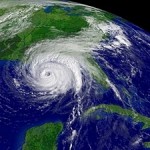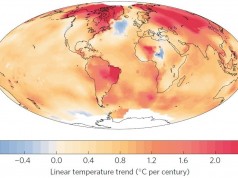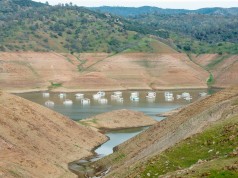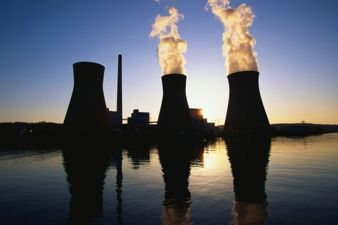
Limiting climate change to target levels will become much more difficult to achieve, and more expensive, if action is not taken soon, according to a new analysis from International Institute for Applied Systems Analysis (IIASA), ETH Zurich and National Center for Atmospheric Research (NCAR).
The new study, titled “Probabilistic Cost Estimates for Climate Change Mitigation” and published on January 2 in the journal Nature, examined the probability of keeping average global temperatures from rising more than 2°C above pre-industrial levels under varying levels of climate policy stringency, and thus, mitigation costs. In addition, the study for the first time quantified and ranked the uncertainties associated with efforts to mitigate climate change, including questions about the climate itself, uncertainties related to future technologies and energy demand, and political uncertainties as to when action will be taken.
The climate system itself is full of uncertainty – an oft-used argument to postpone climate action until we have learned more.
“We wanted to frame the problem in a new way and try to understand which uncertainties matter in trying to limit global warming by specific climate action,” said Joeri Rogelj, ETH researcher and lead author on the paper, who carried out the research at IIASA.
The most important uncertainty, according to the study, is political – that is, the question of when countries will begin to take serious action to reduce greenhouse gas emissions and implement other policies that could help mitigate climate change.
Keywan Riahi, IIASA energy program leader and study co-author said, “With a twenty-year delay, you can throw as much money as you have at the problem, and the best outcome you can get is a fifty-fifty chance of keeping temperature rise below two degrees.” Two degrees is the level that is currently supported by over 190 countries as a limit to avoid dangerous climate change.
Social uncertainties, which influence consumer energy demand, were second-most important, the study found. Social uncertainties refer to things like people’s awareness and choices with respect to energy and to the adoption of efficient technologies.
“How much energy the world consumes going forward turns out to be a much bigger swing factor for climate change than the availability of technologies like solar and wind power, biofuels, and so on,” said IIASA researcher David McCollum, another co-author.“Energy efficiency, improved urban planning, lifestyle changes – these things on the demand side of the energy equation are so important; yet they receive relatively little attention compared to the supply side.”
The researchers examined geophysical and technological uncertainties and found that while the climate system and energy supply technologies are generally seen as the major factors for climate, they ranked below political and social uncertainties in the new study. Geophysical uncertainties refer to the unknown – and unknowable – factors about how the climate system will react to greenhouse gas emissions. Technological uncertainties refer to questions about which energy supply and carbon capture systems will be available in the future.
The authors used scenarios to define how these factors affect the probability of staying within a given temperature target, at a variety of carbon prices. In addition to the 2°C target, the researchers also explored the distribution of costs and risks for limiting global warming to below 1.5°C and 3°C.Even for a 3°C target, a 20-year delay in the most stringent greenhouse gas reductions in combination with a high demand future means that there would remain a one in three chance that temperatures exceed 3°C. At the same time, limiting warming to 1.5°C with at least a fifty-fifty chance (a target supported by the least-developed countries and small island states) appears only to be possible if the world starts acting on climate change now and turns towards an energy-efficient future.
Surprisingly, while much research is focused on understanding the global climate, a highly complex system with many uncertainties, the new study finds that after a certain point, there is little chance of limiting temperature rise to below 2°C.
“Ultimately, the geophysical laws of the Earth system and its uncertainties dictate what global temperature rise to expect,” said Rogelj. “If we delay for twenty years, the likelihood of limiting temperature rise to two degrees becomes so small that the geophysical uncertainties don’t play a role anymore.”
Source: IIASA.
Notes:
In order to make the results of their study accessible to the wider public, the authors developed a simple interactive tool that is free for download. The tool allows people to explore the feasibility, costs, and likelihood of limiting warming to specific temperature targets. The tool can be downloaded from: http://www.nature.com/nature/journal/v493/n7430/full/nature11787.html#/supplementary-information
About IIASA
International Institute for Applied Systems Analysis (IIASA) is an international scientific institute that conducts research into the critical issues of global environmental, economic, technological, and social change that we face in the twenty-first century. Their findings provide valuable options to policy makers to shape the future of the changing world. IIASA is independent and funded by scientific institutions in Africa, the Americas, Asia, Oceania, and Europe. For more information, visit www.iiasa.ac.at.















